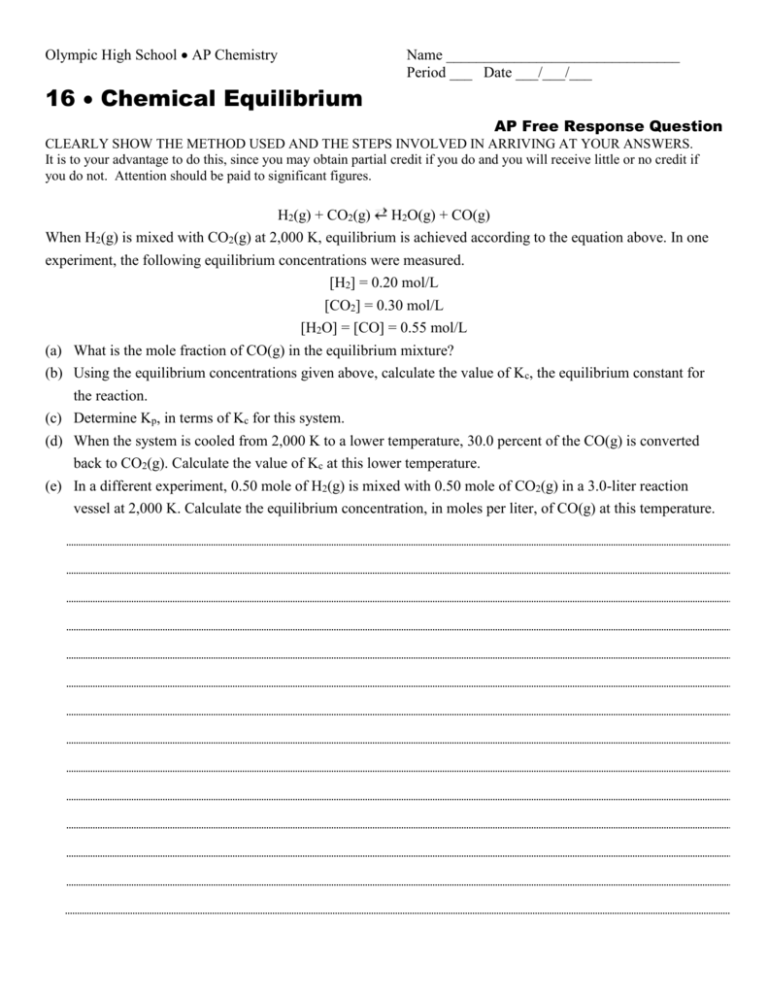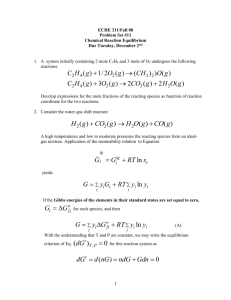AP Chemistry - Olympic High School
advertisement

Olympic High School AP Chemistry Name _______________________________ Period ___ Date ___/___/___ 16 Chemical Equilibrium AP Free Response Question CLEARLY SHOW THE METHOD USED AND THE STEPS INVOLVED IN ARRIVING AT YOUR ANSWERS. It is to your advantage to do this, since you may obtain partial credit if you do and you will receive little or no credit if you do not. Attention should be paid to significant figures. H2(g) + CO2(g) H2O(g) + CO(g) When H2(g) is mixed with CO2(g) at 2,000 K, equilibrium is achieved according to the equation above. In one experiment, the following equilibrium concentrations were measured. [H2] = 0.20 mol/L [CO2] = 0.30 mol/L (a) (b) (c) (d) (e) [H2O] = [CO] = 0.55 mol/L What is the mole fraction of CO(g) in the equilibrium mixture? Using the equilibrium concentrations given above, calculate the value of Kc, the equilibrium constant for the reaction. Determine Kp, in terms of Kc for this system. When the system is cooled from 2,000 K to a lower temperature, 30.0 percent of the CO(g) is converted back to CO2(g). Calculate the value of Kc at this lower temperature. In a different experiment, 0.50 mole of H2(g) is mixed with 0.50 mole of CO2(g) in a 3.0-liter reaction vessel at 2,000 K. Calculate the equilibrium concentration, in moles per liter, of CO(g) at this temperature.











